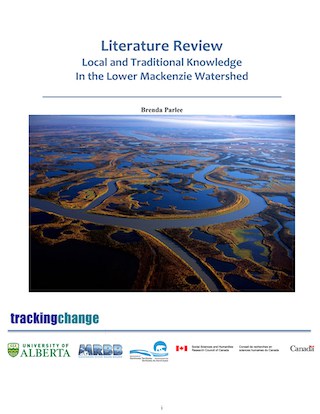The Great Slave Lake
The name ‘Great Slave’ came from the Slavey Indians, one of the Athapaskan tribes living on its southern shores at that time.
Quick Facts
- Drainage Area: Tenth largest lake in the world, 469 km long, 203 km wide, area” 27,200 km2 Catchment area: 971,000 km2.
- Human Population: Łutselk’e = 350 people. Yellowknife, Hay River, Behchokǫ̀, Fort Resolution, Łutselk’e, Hay River Reserve, Dettah, Ndilǫ = ~ 26472.
- Jurisdictions: Northwest Territories. Slavey, Dene, Cree, Dettah, Łutselk’e, and Fort Resolution.
- Ecology: Boreal Forest and Tundra. Canadian Shield. Arctic ecology. Trout is likely the most important fish. Fisheries, land mammals, birds.
- Development:
- Strained commercial fish stocks (some recovered).
- Pollution from Mining (arsenic tailings spills).
- Mining.
- W.A.C. Bennett Dam.
- Climate Change.
Community Research Projects
- Graduate Student: Sydney Stenekes – Dehcho Region (Great Slave Lake): Culturally Driven Freshwater and Fish Monitoring: Opportunities for Social Learning in the Dehcho Region. (2019).
- “Guiding Water Protection Through Traditional Knowledge” – Akaitcho Territorial Government.
- Łutsël K’é Dene First Nation Tracking Change in the Great Slave Basin Project
- “Retracing Our Routes” – 8 Day canoe trip – Lauren King.
- Łutsël K’é Dene First Nation Tracking Change in the Great Slave Basin Project – Ray Griffith.
- Past Knowledge for Future Protection – Annie Boucher.
Learning From The Land
“This was our land. This was our livelihood, and they destroyed everything we had. They destroyed our water. They destroyed the air. They destroyed the bush. Like they cut all the trees down and chased all the animals away. You know?” (FMkFNIRC 2008: 32)
“When the oil sands plants opened it was good for jobs but it ruined our country. We won’t have fish or berries to eat. The animals will be unfit to eat and we won’t be able to drink the water. Our lifestyle will be different…” (Emma Faichney in FMkFN 1994: 81)
Related Publications
- Great Slave Lake
FMkFN—Fort McKay First Nation (1994) There is Still Survival out There: A Traditional Land use and Occupancy Study of the Fort Mckay First Nation. Calgary: Arctic Institute of North America
FMkFN-IRC – Fort McKay First Nation – Industry Relations Committee (2008a), Fort McKay First Nation. Traditional Knowledge Report. Parsons Lake Resources Park. Environmental Assessment Report. Calgary: FMA Heritage Resources Consultants Inc.
Quinn, F. (1991). As long as the rivers run: The impacts of corporate water development on Native communities in Canada. Canadian Journal of Native Studies
Co-Investigators
Brenda Parlee
Arn Keeling
Bruno Wichmann
Dave Natcher
Henry Huntington
Herman Michell
Jennifer Fresque-Baxter
Mark Nuttall
Shalene Jobin
Sonia Wesche
Trevor Lantz
Val Napoleon
Master Students
Laura Gaitan
M.A. Candidate, Geography
